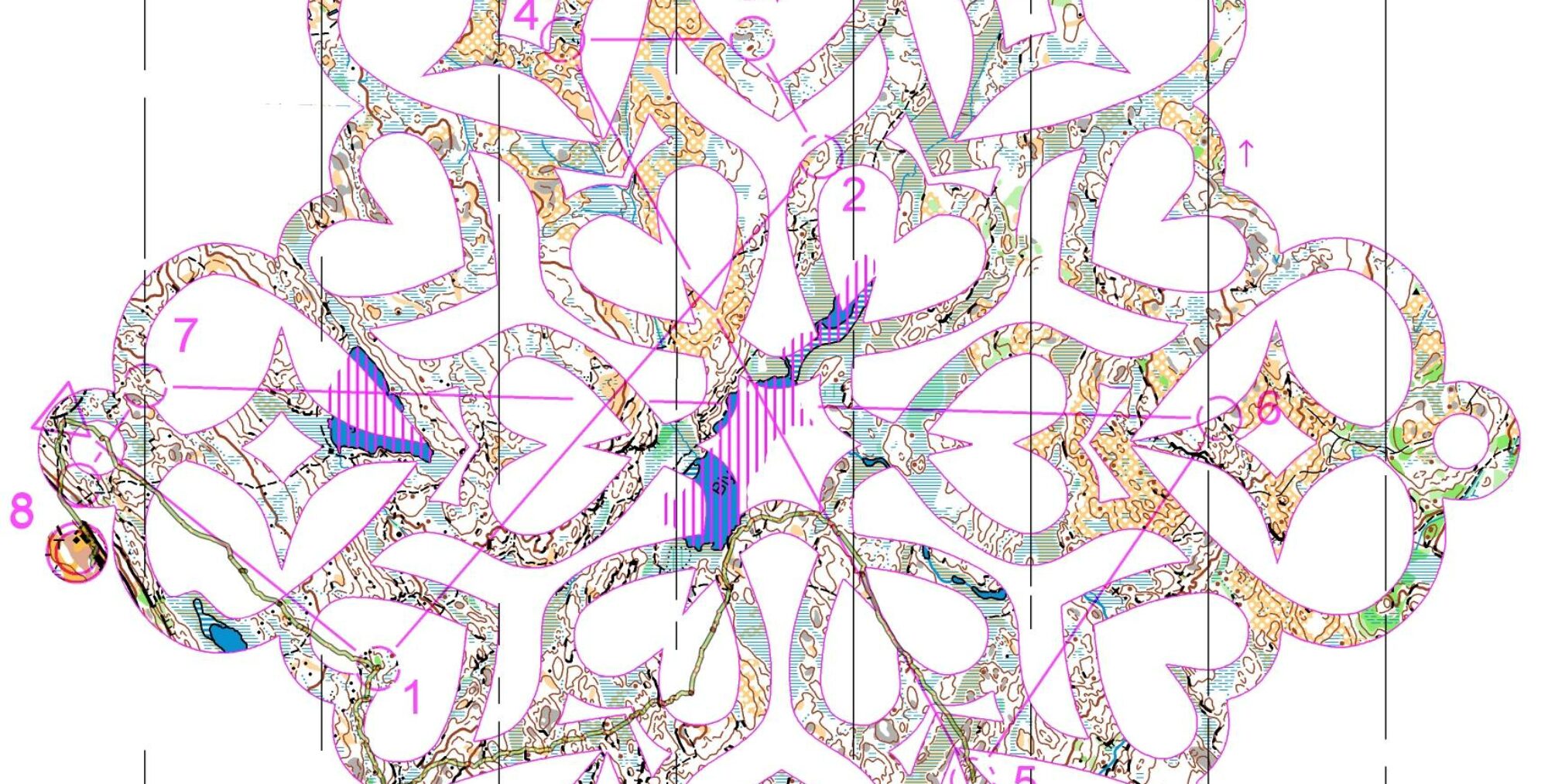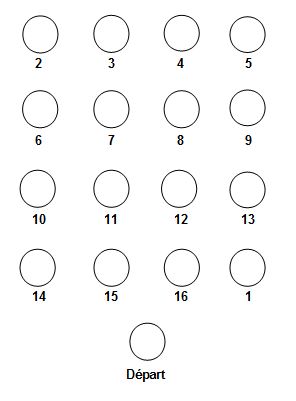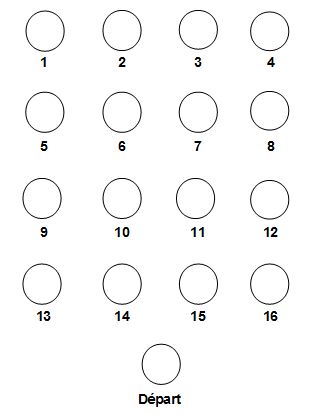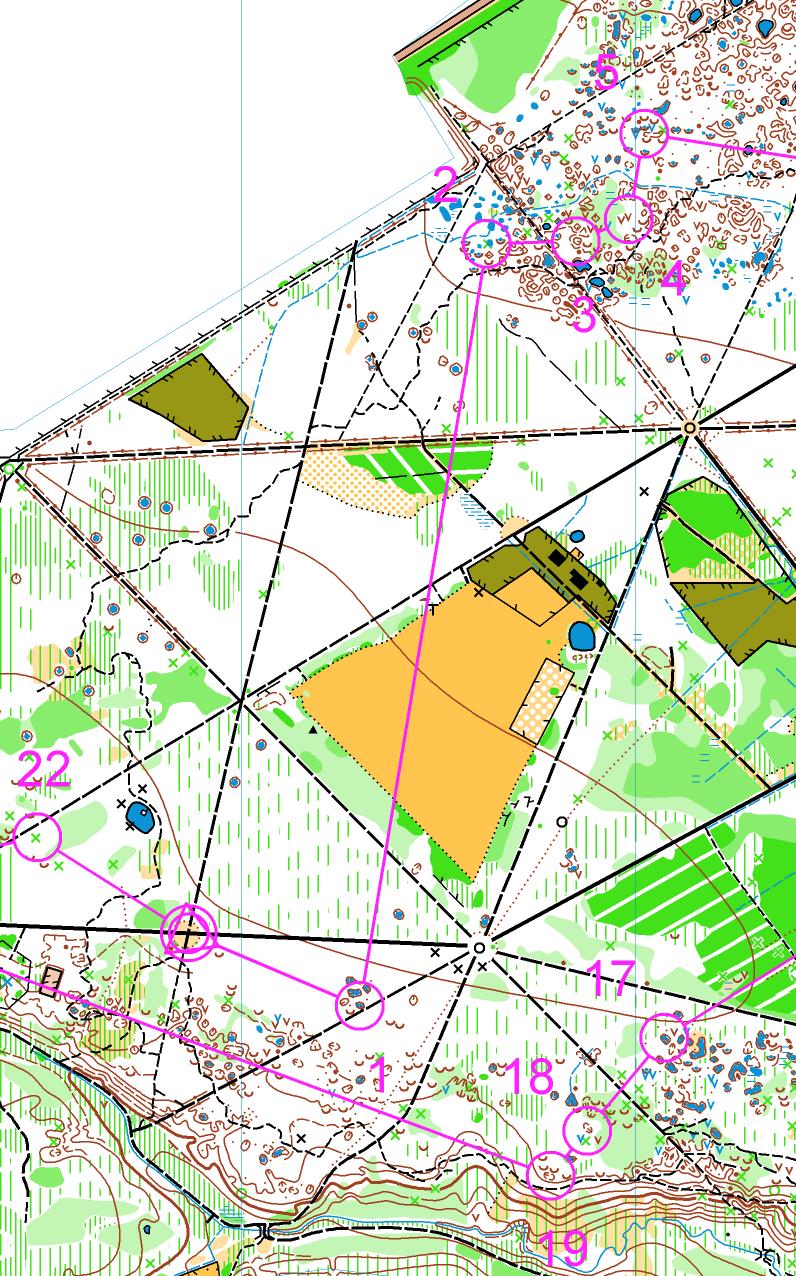Set up a network of 17 cones. Number the cones on the drawing .
Print out cards by shifting the numbers of the cones. You get 16 different cards (see the example beside).
Hand out your cards. Call out a number. Each person has to go to the corresponding cone ( nobody will be on the same one, except if you have more than 16 runners).
Alternative
- change the location of the start cone to confuse the runners (the orientation of the map has changed)
- call out one number, then another one, without returning to the start
Comment
If you have 10 young people, hand out cards with numbers for the first cone, which “are following” each other ( 1,2,3 …). When you call “12” for example, you will immediately see who made a mistake, because the runners should be on cones next to each other. It is convenient not to have to check that each person is at the right place.
Contributor
Nathalie Rauturier



